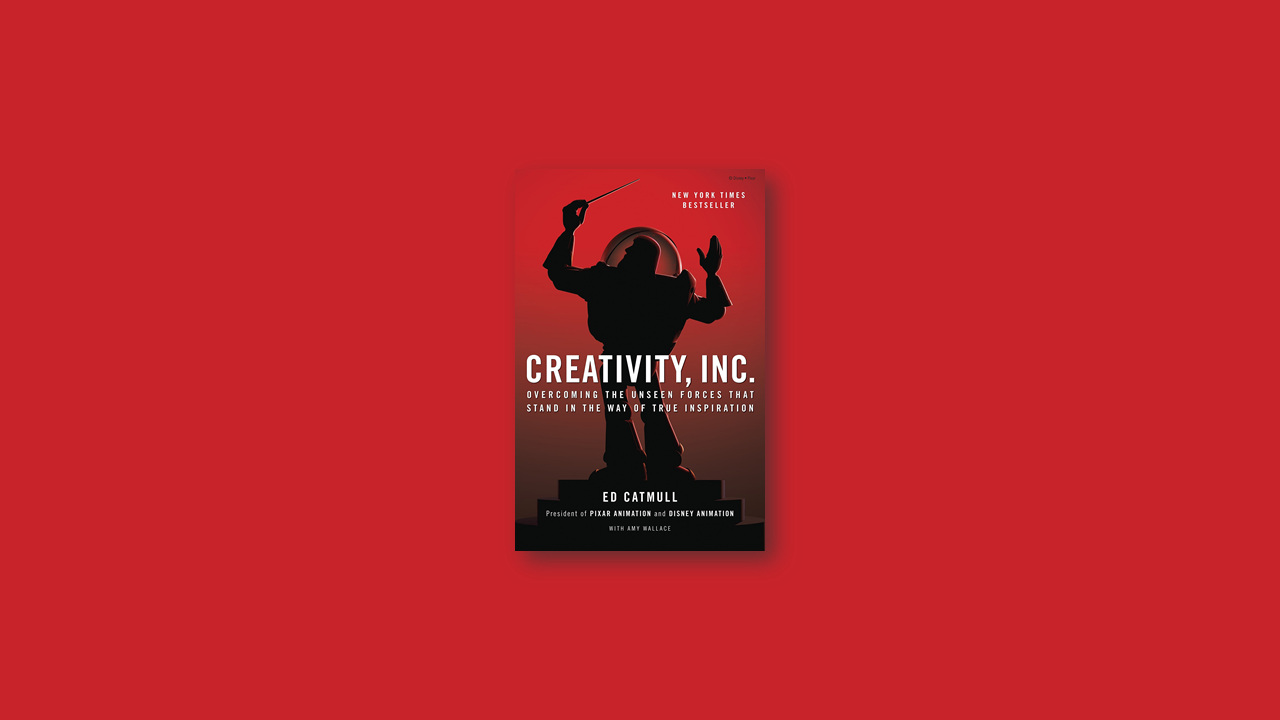Zero Failure Is Useless
Many industries set goals of having zero injuries. But just because failure free is crucial in some industries does not mean that should be a goal in all of them. When it comes to creative endeavors, the concept of zero failures is worse than useless, it is counter-productive.
Incorporate collective failure into iterative process.
Pixar does this by placing value on iterative processes i.e., they accept that mistakes are part of the process and try to weed them out with each new iteration of their projects. Central to this philosophy is the idea that whole team rather than just a single individual is responsible for failure. And so, everyone must work together to overcome it.
Give time for exploration to minimize the consequences of mistakes.
Pixar give their employees more time for exploration and correction during the develop phase of filmmaking. In doing so, their correction and reworks are inexpensive in comparison to mistakes during the actual production phase.
Post-mortems are Pixar’s term of project debriefs.
Post-mortem is a meeting held shortly after completion of every movie in which they explore what did and did not work and attempt to consolidate lessons learnt.
Let It Go
The real issue is not finding your own voice but getting rid of it.
Creativity requires the understanding that to advance creatively, we must let go of something. Simply repeating what worked in the past can lead to nowhere. Or more accurately, it leads in the opposite direction of originality. The trick is to use our skills not to duplicate, but to invent.
Short animations are of no commercial value to Pixar, yet they still make them regularly. What gives?
Because short animations are staffed with fewer people, each employee must do more things, developing a variety of skills that come in handy on the line. Moreover, working in small groups forges deeper relationships that carry forward and in the long-term benefit company future projects. Pixar shorts also create value in two key areas (1) externally, they help us forge a bond with movie goers who have come to regard them a bonus, something added solely for their enjoyment (2) internally, because everyone knows the shorts have no commercial value the fact that Pixar continue to make them sends a message that they care about artistry at Pixar. It reinforces and affirms Pixar values.
Encouraging Creativity, Not Boredom
Pixar offers a great example with its ‘Braintrust’, a group of long-term Pixar employees and film-producing experts in various fields who regularly review each film during its production process. Though they can make comments or suggestions, their advice is not mandatory, it’s all up to the film’s director to take it or leave it. This structure leaves real experts in control and allows their own creative expression to flourish.
The way Ed sees it his job as a manager is to ….
Create a fertile environment, keep it healthy and watch for the things that undermine it. He believes it to his core that everybody has the potential to be creative, whatever form creativity takes, and that to encourage such development is a novel thing.
Unleashing creativity requires 5 things
- We loosen the controls
- Accept risks
- Trust our colleagues
- Work to clear the path for them
- Pay attention to anything that creates fears
Doing all these things won’t necessarily make the job of managing creative culture easier, but ease isn’t the goal. Excellence is.
Notes Day at Pixar
Pixar leadership realized there were a number of problems at the company they didn’t know how to solve. Rather than having managers develop and announce changes, Pixar’s leaders decided to open the floor, allowing those closer to the problems to offer up solutions. On Notes Day, Pixar shuts down all work for a day to facilitate brainstorming sessions throughout the entire company, where anyone can suggest new ways of working and solutions to current problems.
Small Things matter
Sometimes changing the creative atmosphere can be as simple as replacing a table. Early on at Pixar, meetings were held at a long, rectangular table with place cards at each seat. The setup created unwanted sense of formality and hierarchy. People in the middle were more likely to engage while those at the back and the edges felt isolated. By simply replacing the old table with a square one and eliminating place cards, everyone had an equal airtime.
In addition, anyone at Pixar can decorate their workspace however they want, no matter how elaborate, as an expression of their unique personality.
ROOm for creative endeavors
Two days every month are ‘personal project days’ where Pixar employees can use all available tech to work on any project or problem that they find personally interesting. This is a Pixar way of ensuring employees will both remain happy and even come up with creative ideas that could benefit Pixar.
To whom it may inspire,
I, like many of you artists out there constantly shift between two states. The first, and far more preferable of the two is white hot, in the zone, seat of the pants, firing on all cylinders creative mode. This is when you lay your pen down and the ideas pour out like wine from a royal chalice. This happens about 3% of the time.
The other 97% of the time I am in the frustrated, struggling, office corner full of crumpled up paper mode. The important thing is to slog diligently through this quagmire of discouragement and despair. Put on some audio commentary and listen to the stories of professionals who have been making films for decades going through the same slings and arrows of outrageous production problems.
In a word – persist. Persist on telling your story. Persist on reaching your audience. Persist on staying true to your vision. – Ed Catmull


